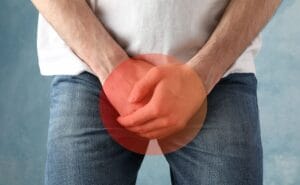Among the problems that often occur are:
1. Shoulder Pain
Frozen shoulder is very common in the elderly. this is caused by the problem of the shoulder joint capsule that hardens and causes the shoulder to become stiff and sometimes causes pain.
2. Knee Pain
Knee pain may be the result of an injury, such as a ruptured ligament or torn cartilage. Medical conditions — including arthritis, gout and infections — also can cause knee pain. Many types of minor knee pain respond well to self-care measures. Physical therapy and knee braces also can help relieve pain.
3. Elbow / Finger Pain
Elbow pain is often caused by overuse. Many sports, hobbies and jobs require repetitive hand, wrist or arm movements. Elbow pain may occasionally be due to arthritis, but in general, your elbow joint is much less prone to wear-and-tear damage than are many other joints.
4. Foot and Ankle Pain
Injury, overuse or conditions causing inflammation involving any of the bones, ligaments or tendons in the foot can cause foot pain. Arthritis is a common cause of foot pain. Injury to the nerves of the feet may result in intense burning pain, numbness or tingling (peripheral neuropathy).
So, What To Do?
1. Pain Relief and Rest
Pain relievers can relieve pain for a short period of time and allow the patient to focus on rest or doing physiotherapy.
2. Exercise and Physiotherapy
There are various methods for joint physiotherapy and physiotherapy can be done at any time but there must be a high commitment and always be consistent. physiotherapy methods can help more than 70% of patients.
3. Injection Method on Joints or Involved Areas
When physiotherapy and painkillers do not help, the joint injection method is very effective in providing quick relief and shortening the recovery period.





